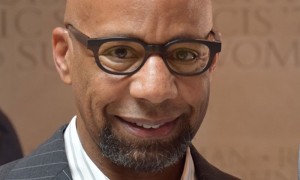Originally published on: Apr 25, 2012
Narrative sportswriting is finding some homes in the digital world
By Carl Straumsheim
Over beers at a Chicago bar last summer, two friends lamented their lost love for the newspaper sports page.
“What first got me excited about journalism was the sports section―the playground of the newspaper,” says Jonathan Eig, an author and at the time a sports columnist for Chicago magazine. “There weren’t any Web sites that gave us the same goosebumps as the sports section used to in its prime. Because most sports on the Web isn’t catered to a local audience, good writing is a lost art. What drives the Web is pageviews and churning so many stories as quickly as you can.”
Eig and Sol Lieberman, a Chicago-based digital media strategist, agreed that narrative sports journalism, long the domain of newspaper and magazine writers, needed a comeback. That July day, the two hatched a plan for a Chicago-centric sports Web site that, in the words of Eig, “would let writers strut their stuff a little bit.”
Nine months later, as the 2012 baseball season began, ChicagoSide held its own opening day, with Eig as editor-in-chief, Lieberman as creative director and a lineup of freelance writers waiting in the wings.
Sites like ChicagoSide and Grantland, the passion project of Bill Simmons that comes with the financial backing of ESPN, are challenging the notion that sportswriting on the Web is all about game summaries, Top 10 lists and quick takes. They eschew the inverted pyramid, welcome first-person essays and invite writers―established names and up-and-comers alike―to show off in a way that would draw a penalty for excessive celebration or a technical foul if they were athletes and not the journalists covering them.
Make no mistake: Online sportswriting is still defined largely by pithiness and snark. But narrative sports journalism, which often asks readers to do the digital equivalent of going to the jump, is having its time in the sun.
To find long-form sports writing on the Web, readers often have to look beyond the local sports page. “As the newspaper business deteriorates further, talented people with enthusiasm and the ability to report and write are looking for places to do it,” says Dave Kindred, a veteran sports columnist and author who writes for the National Sports Journalism Center at Indiana University.
There are mainstays like Sports Illustrated, which posts some of its signature narrative stories online, most notably from award-winning writer Gary Smith. There are sites like The Atlantic and Esquire that dabble in sportswriting, most notably a recent exposé on the NCAA by The Atlantic’s Taylor Branch. There are upstarts, such as New York-based The Classical, an ambitious Web publication in the works that promises to publish long-form sportswriting.
And there are digital casualties. FreeDarko, a popular blog that posted in-depth basketball analysis (often about obscure topics), ceased operations last spring. ESPN.com’s Page 2, the original online home of the lengthy sports column and narrative think piece, closed its doors in April after 12 years, replaced by ESPN Playbook, a site that bills itself as being about “fans, entertainment, music and gaming.”
Page 2’s early days featured the literary writings of Hunter S. Thompson and David Halberstam. In later years, it became known more for humorous, often irreverent stories that didn’t fit with the editorial tone of ESPN.com’s home page (Jim Caple at a motorcycle rally; nearly 4,000 words on competitive air guitar).
Simmons, who started as the “Boston Sports Guy” and soon became “The Sports Guy,” made his name on Page 2 writing about sports from the fan’s perspective―often relying on personal anecdotes from watching games on his couch rather than gathering quotes at press conferences and in locker rooms. Simmons leveraged his celebrity and devoted following to launch Grantland in June 2011. The site, a mixture of sports and pop culture, is named after Grantland Rice, an early-20th-century journalist whose sportswriting appeared in newspapers across the country.
For Grantland, Simmons assembled a roster that combines prominent literary journalists and authors―among them Chuck Klosterman and Malcolm Gladwell―and lesser-known writers, including a New York screenwriter and a former walk-on benchwarmer for the Ohio State men’s basketball team.
Simmons, Grantland’s editor-in-chief, brings his brand of first-person, personality-infused sports writing to the site, mostly in the form basketball columns. From a recent story: “Sorry, we have to run the Bobcats back because you won’t ever witness a more worthless professional basketball team. You can’t even call them shitty because it’s an insult to shit.” And… “For the record: I fully support tanking when a blue-chipper like Anthony Davis [of the NCAA champion Kentucky Wildcats] is waiting at the end of the tanking rainbow.”
Simmons wrote more than 4,000 words in that piece about the 33 reasons why fans should be excited about the NBA stretch run. That’s nothing compared to his 700-page “The Book of Basketball,” which explores every angle of today’s NBA. Grantland takes full advantage of the fact that there are no newshole restrictions on the Web.
Mixed in with blog posts, reaction columns and power rankings are lengthy sports stories on the persona of soccer great Pelé and the connection between fan and inmate behavior. Grantland is filled with stories about the intersection of sports and pop culture, such as recent essay comparing the Masters golf tournament to the hit television show “Mad Men,” and an article on the portrayal of female athletes in movies. Then there are the articles with little or nothing to do with sports―a writer’s account of his experience at the Coachella Music Festival and a retrospective about Dick Clark.
Grantland’s eclectic mix of narrative writing is an experiment that’s being watched closely by journalists and sports media commentators.
“Grantland is still evolving,” Kindred says. “I don’t know if they know exactly what they want to be. But they have good people. Their mantra is, ‘We don’t need to be first but we need to be best.’ I like that idea. It’s an ambitious undertaking.”
Eig argues that narrative sportswriting can be most effective at the local level. That’s the mission of ChicagoSide, whose name is a reference to Chicago’s geographic divide.
“This city has the North Side and the South Side, but sports is what unifies the city,” says Eig, who has lived in Chicago for nearly two decades.
ChicagoSide is seeking to cover Windy City sports in a different way―through a collection of essays, first-person accounts, point-counterpoints, features and, yes, the occasional Top 10 list. Game stories are not the focus, and the beat writer doesn’t exist. Instead, ChicagoSide is relying on a cadre of freelancers who cover the Chicago sports scene.
“Sometimes we look at the calendar and ask, ‘What can we say about hockey?’ So that’s a news-based decision,” Eig says. “Other times we say, ‘Who are the good writers out there? Let’s see what they want to write.’ ”
ChicagoSide writers have already published pieces about what it’s like for a former athlete to face retirement (a monthly column), the excessive commemoration of the 2005 World Series championship at the Chicago White Sox’s ballpark and the Chicago Cubs’ draft woes.
ChicagoSide hopes to support itself in part via advertising on the site. It also hopes to sell its content to print publications, and also may put on some money-raising events.
So far there are no paid employees―Eig and cofounder Lieberman are doing their jobs on a volunteer basis. They expect to pay nominal salaries within the next few months. Right now they pay writers $50 a story. If the story is picked up by a print partner―they have a deal under which TimeOut Chicago, where Eig now writes a column, will run a ChicagoSide story each week in print―writers get extra money. There’s also a bonus pool for writers who write many stories per year.
Eig, author of books about Jackie Robinson and Lou Gehrig, wrote a welcome column on April 2 that set the site’s narrative tone. He described his first job working in the sports department of his hometown newspaper, the Journal News in Nyack, New York:
My first impression upon arrival in the sports department was that Neil Simon nailed it when he created Oscar Madison in “The Odd Couple.” A bigger bunch of slobs I’d never met. I can still smell the place — all sweat, cigar smoke, and news ink.
If you need any more proof that ChicagoSide is not exactly competing with the Chicago Tribune or ESPN Chicago, here it is: the site has a resident poet. Dave Landsberger made his debut on April 5 with an “Ode to Opening Day.”
Promise smells like peanuts, ice in the urine trough, the citrus of halter topsand sunburned comrades clenching salted cylindrical meats. Today, Opening Day: An excuse to take the day off and not flock to pornography.
ChicagoSide is operating under Eig’s philosophy that “people want simplicity on the Web.” For now, that means one original piece of reporting (or essaying or poetry) per day, in addition to links to stories around the Web.
“We like the idea of stepping back and not having to cover every Bulls playoff game, not having to worry about breaking every story,” Eig says. “We can pick and choose when it’s time to weigh in. We want to surprise people with our story selection and be more like a magazine. We have to ask ourselves, ‘How can we be different?’ No one is doing long-form, locally-based journalism that takes you beyond the news.”
That doesn’t mean every story on ChicagoSide (or Grantland for that matter) is 3,000 words, though Eig says most on his site eclipse 1,000 words. “Our pact with readers is come to us every day and we won’t waste your time.”
Eig says readers are spending an average of 2.5 minutes on the site per visit. He’s convinced that people are willing to dig in online.
Kindred says attention spans tend to be short on the Web, and many people are in search of content they can quickly scan. “The longer narrative pieces, what we used to call takeouts, have always been a niche product,” he says. “I think they will remain a niche product. But they give readers a richer take on the sports world than they would get reading a 300-word article.
“Writers have been telling stories at length for a long time, “Kindred adds. “We want those stories. All that’s happening now is the delivery system is changing place, and people are feeling their way through it. There will always be a place for the long story, for the good story well told.”
They are the kinds of stories that friends like to discuss over a beer.
Carl Straumsheim is a graduate student at the Philip Merrill College of Journalism at the University of Maryland.









Leave a Comment